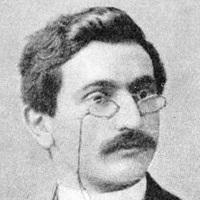
The Endgame Cunning of Emanuel Lasker, Part 2
In the first part of my series on Emanuel Lasker's endgame play, we saw how he began the St. Petersburg 1914 tournament rather poorly, nearly failing to qualify for the finals. Even in the finals he was still playing catch-up to José Capablanca, who was playing with machine-like precision.
After defeating Alexander Alekhine in the 17th round in a tricky - and rather lucky - game (which we saw last week), Lasker had drawn even with Capablanca, each having 11 points. However, Capablanca had already had his bye and thus had four games to play, while Lasker only had three. In practical terms, Capablanca still led by somewhere around half a point. In the very next round, the two players would meet, and it was clear that this game would be crucial. Lasker needed to go all out for the win.
But why did this tournament matter to Lasker, who had already held the world championship for twenty years? Nowadays, twenty years of holding the world championship seems like it would satiate even the most competitive character, and Lasker - who took extended breaks from chess and seemed to hold other intellectual activities in higher regard - was hardly someone who lived and breathed only chess.
However, I think Lasker understood that his standing as an intellectual was largely due to his accomplishments in chess, and in many ways his standing as the top player was in doubt. He had barely managed to draw his world championship match with Carl Schlechter, and that only by winning the last game with some luck. He had hardly faced his top challengers in the first decade of the 20th century, and a number of talented players were knocking on his door - Rubinstein, Maroczy, Alekhine, and of course Capablanca. And in those days, tournaments were few and far between, so it is understandable that Lasker felt a strong need to prove his worth, and fought like a lion to do so.

Lasker's game against José Raúl Capablanca from the 18th round is far more famous than the game against Alekhine, which we saw last week. However, this game is not only of great instructive value, but also was very important in a competitive sense at the time. If you have never seen the game, it is a crucial element of classical chess which you should see; if you have already seen it, then you can still learn more from it - as we progress as chess players, we can learn more even from games we have already seen.
Lasker has masterfully taken advantage of Capablanca's rather passive play and achieved a huge advantage. But now - before scrolling down - try to think what move you would play here. Solve the following position for White to play - this way Lasker's powerful move will come as more of a revelation than if you simply see it in the game.
And here is how the game finished:
Besides Lasker's wonderful positional play, there is something else to be learned from this game - something more psychological. Capablanca wanted to draw - that much was clear. But when you play overtly with a draw in mind, this can negatively affect your play. You play too passively, are too willing to exchange pieces. You begin to accept "small" disadvantages, which seem manageable. But slowly you slide down the hill to defeat. No, when you need to draw, whether you have white or black, you need to play your normal game! You only need to consider the tournament situation when a variation leading to a clear draw presents itself.
Lasker's psychological insight led him to the perfect variation - at that time - to take advantage of Capablanca's psychology. The exchange variation, with its early queen exchange, proved tantalizing for Capablanca. A few more exchanges and he would be the winner of one of the greatest tournaments thus far in the twentieth century! But those few steps to a draw did not present themselves. Instead, Capablanca needed to play actively, to use his two bishops in a healthy manner; and this he was unwilling to do.

After this game, Lasker now led by a point. However, he had a bye in the next game, while Capablanca had the white pieces against Tarrasch. Thus Capablanca could have potentially equalized the scores, while there would still be two games remaining for both players.
But - so shaken by his crushing loss to Lasker - Capablanca lost a second game in a row to Siegbert Tarrasch. Perhaps his belief in himself as infallible had been broken, and this caused the collapse. Thus Lasker maintained his one point lead.
In the following round, Tarrasch played the role of spoiler again, this time managing to draw against Lasker, while Capablanca recovered and won against Marshall, thus renewing his hopes of sharing first place.
Although the Lasker-Capablanca game is often described as guaranteeing Lasker's victory, the tournament was not truly decided until after the final game. Capablanca defeated Alekhine, which meant that Lasker had to win "to order" against Frank Marshall in the final round - which he did, thus allowing him to take first place by a half a point.
RELATED STUDY MATERIAL
- Make sure to read The Endgame Cunning of Emanuel Lasker, Part 1;
- Check out a skittles game Capablanca and Lasker also played in 1914 in this Chess Mentor course;
- Keep your tactical eye open with our Tactics Trainer;
- Get inside Lasker's head in GM Dejan Bojkov's video Greatest Chess Minds: Emanuel Lasker - Part 1.

